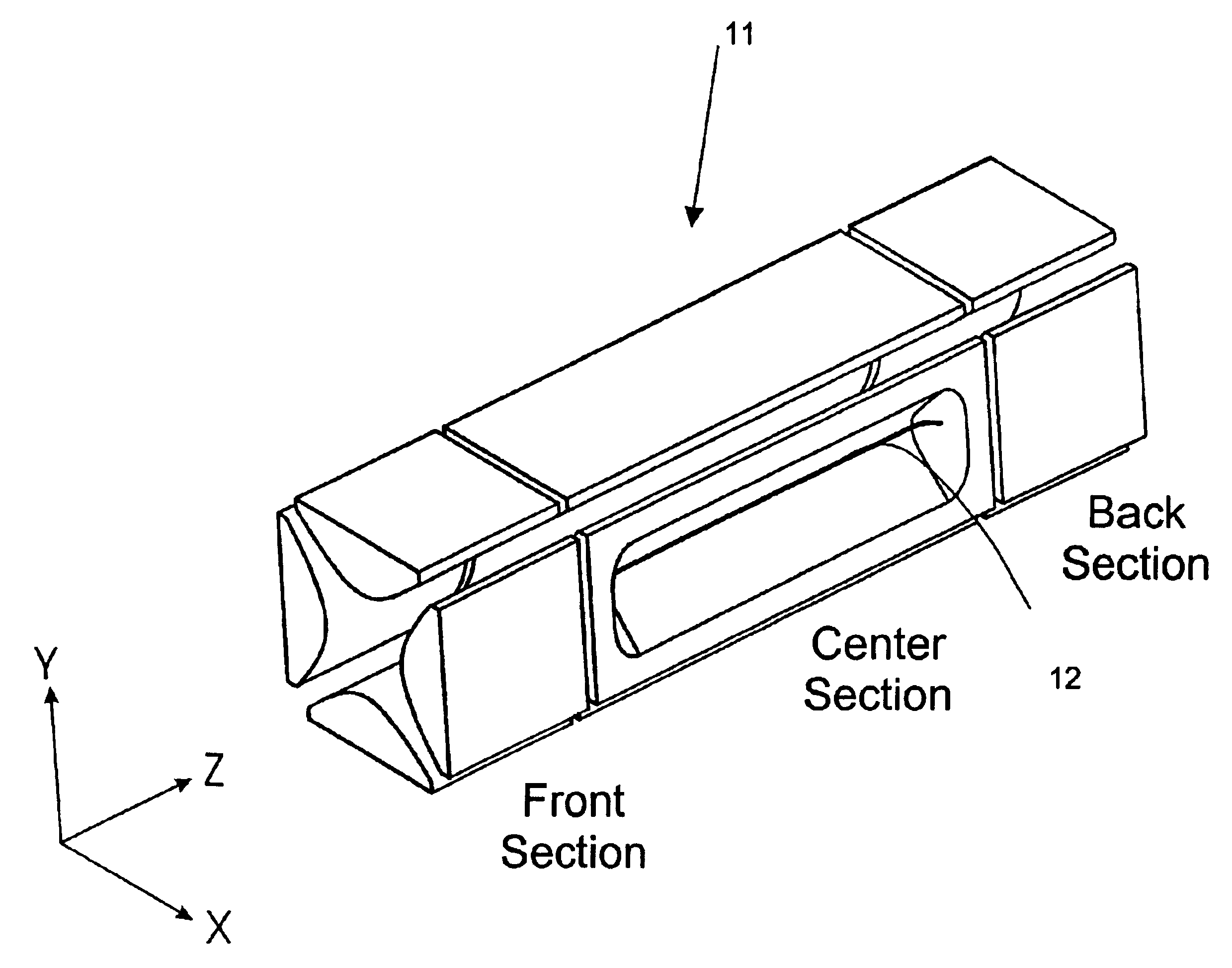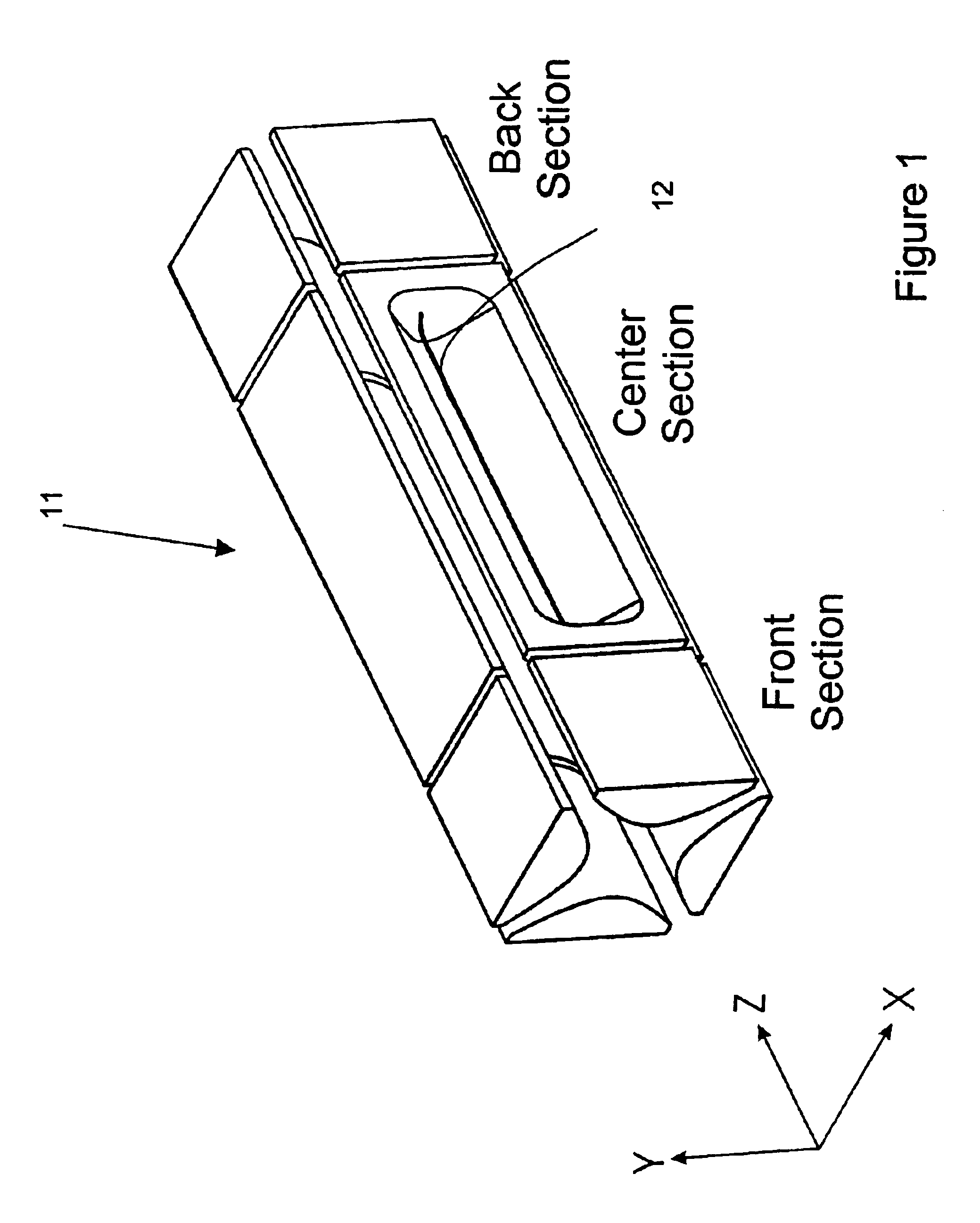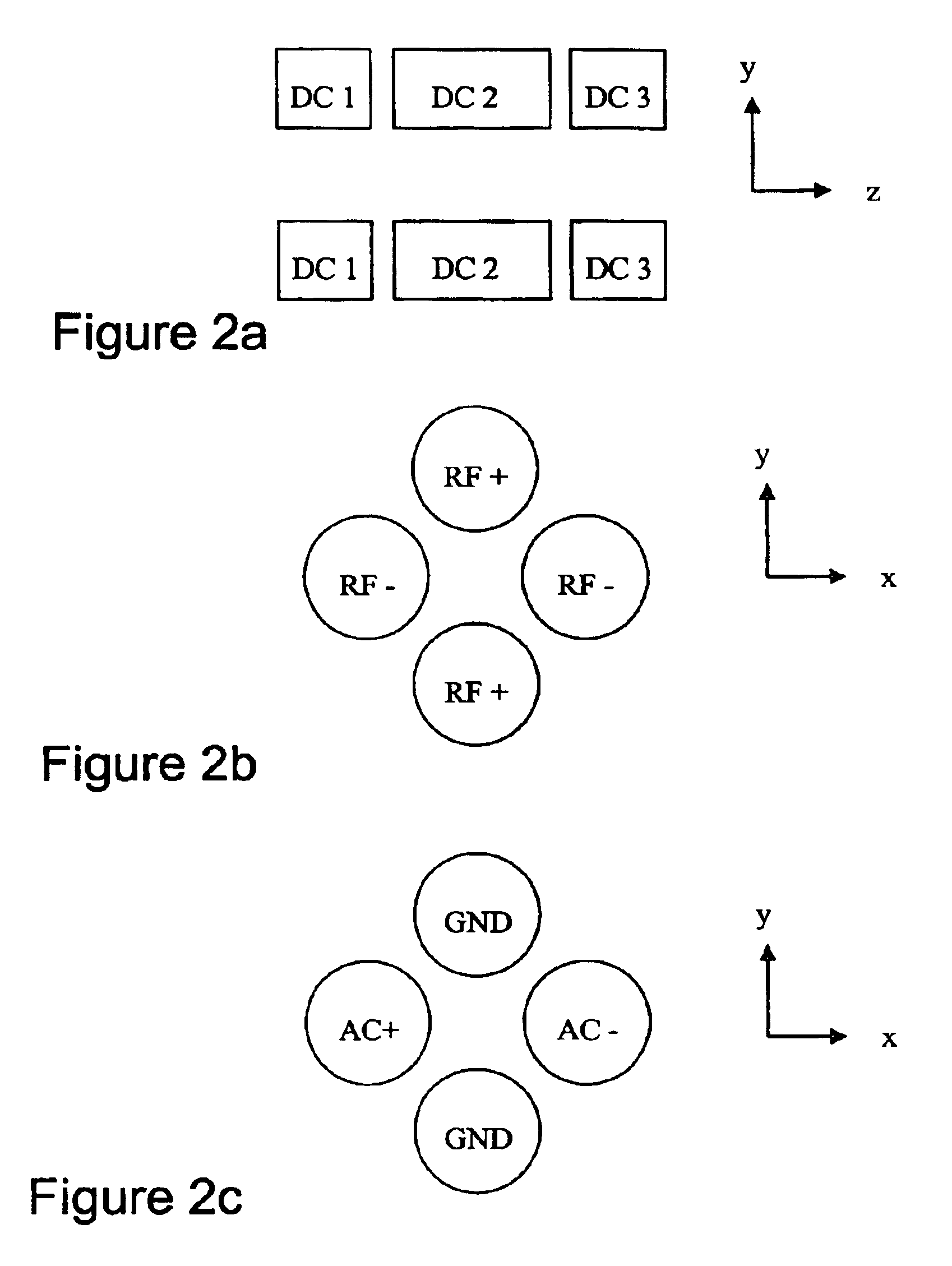Two-dimensional quadrupole ion trap operated as a mass spectrometer
a two-dimensional quadrupole ion and mass spectrometer technology, applied in mass spectrometers, separation processes, stability-of-path spectrometers, etc., can solve the problems of loss of ions, increased overall peak width, and performance of two-dimensional ion traps that are more susceptible to mechanical errors, so as to improve sensitivity
- Summary
- Abstract
- Description
- Claims
- Application Information
AI Technical Summary
Benefits of technology
Problems solved by technology
Method used
Image
Examples
Embodiment Construction
Referring to FIG. 3 a typical linear ion trap mass spectrometer instrument is schematically illustrated. The instrument includes a suitable ion source such as the electrospray ion source 21 in a chamber 22 at atmospheric pressure. Other types of ion sources which may be accommodated by the instrument comprise atmospheric pressure chemical ionization (APCI), atmospheric pressure photo-ionization (APPI), matrix assisted laser desorption ionization (MALDI), atmospheric pressure-MALDI (AP-MALDI), electron impact ionization (EI), chemical ionization (CI), an electron capture ionization (ECI) source, a fast atom bombardment (FAB) source and a secondary ions (SIMS) source. Ions formed in the chamber 22 are conducted into a second chamber 23, which is at a lower pressure such as 1.0 Torr via a heated capillary 24 and directed by a tube lens 26 into skimmer 27 in a wall of a third chamber 28 that is at still a lower pressure, for example, 1.6.times.10.sup.-3 Torr. A heated capillary and tube...
PUM
 Login to View More
Login to View More Abstract
Description
Claims
Application Information
 Login to View More
Login to View More - R&D
- Intellectual Property
- Life Sciences
- Materials
- Tech Scout
- Unparalleled Data Quality
- Higher Quality Content
- 60% Fewer Hallucinations
Browse by: Latest US Patents, China's latest patents, Technical Efficacy Thesaurus, Application Domain, Technology Topic, Popular Technical Reports.
© 2025 PatSnap. All rights reserved.Legal|Privacy policy|Modern Slavery Act Transparency Statement|Sitemap|About US| Contact US: help@patsnap.com



